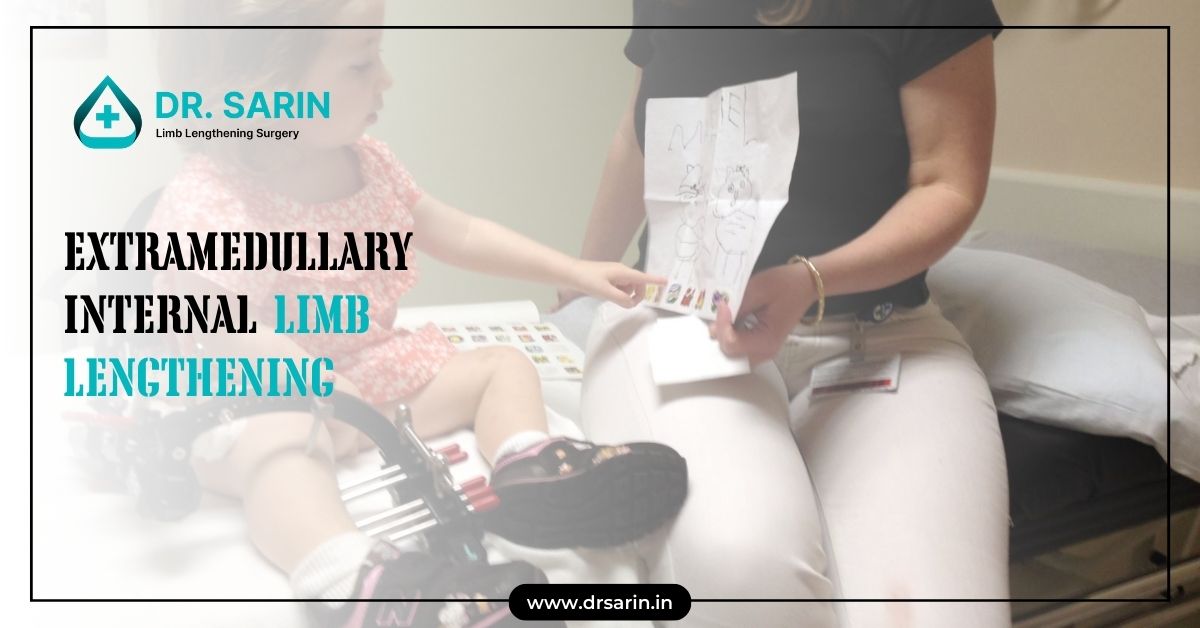Abstract
Extramedullary Internal Limb Lengthening (EMILL) represents an advanced surgical approach to address limb length discrepancies and deformities. This technique utilizes external devices and internal mechanisms to lengthen bones, gradually improving functional outcomes and aesthetic results. This overview provides insights into the indications, methods, postoperative management, and overall effectiveness of EMILL.
Indications For Extramedullary Lengthening
Extramedullary lengthening is indicated for various conditions, including congenital limb length discrepancies, post-traumatic deformities, and certain orthopedic conditions where conventional methods may not be suitable. It is particularly beneficial in cases where internal lengthening devices are preferred due to their minimal invasiveness and better patient compliance.
Femur
EMILL is typically employed in cases of congenital or post-traumatic femoral shortening. The technique allows for gradual and controlled lengthening of the femur, which can enhance functional outcomes and reduce the risk of complications compared to traditional methods.
Tibia
EMILL of the tibia is often indicated for similar reasons as femoral lengthening, including congenital discrepancies or trauma. The approach focuses on achieving optimal alignment and lengthening while minimizing complications such as bone deformities or joint stiffness.
Other Considerations
Other considerations in EMILL include patient selection, the risk of complications such as infection or nonunion, and the potential need for adjunctive therapies like physiotherapy to maintain functional outcomes. Preoperative planning and patient education are crucial for successful outcomes.
Surgical Technique: Extramedullary Internal Limb Lengthening (EMILL) of the Femur
The EMILL technique for the femur involves implanting an internal lengthening device along the extramedullary axis of the femur. The device is adjusted gradually to lengthen the bone while monitoring for proper alignment and regeneration. Surgical precision and postoperative care are vital to ensure successful outcomes.
Surgical Technique: EMILL of the Tibia
A similar approach is used in tibial lengthening, where an internal lengthening device is placed extramedullary. The surgical technique involves careful tibia alignment and gradual lengthening, ensuring stability and minimizing complications. Postoperative monitoring is essential for assessing bone healing and alignment.
Postoperative Routine
Postoperative care includes regular follow-up appointments to monitor bone lengthening, assess for complications, and adjust the lengthening device as needed. Pain management, physical therapy, and adherence to weight-bearing restrictions are key components of the postoperative routine.
Pearls and Pitfalls
Pearls: Careful preoperative planning, precise surgical technique, and thorough patient education can significantly enhance outcomes. Regular follow-up and early intervention for complications are also crucial. Pitfalls: Common pitfalls include inadequate lengthening, misalignment, and infection. Rigorous monitoring and timely intervention can mitigate these risks.
Methods
EMILL methods involve internal lengthening devices, precise surgical techniques, and gradual lengthening protocols. Advanced imaging and surgical planning tools are utilized to optimize outcomes.
Results
Results from EMILL procedures generally show favorable outcomes regarding limb lengthening, functional improvements, and patient satisfaction. Studies indicate that the technique effectively addresses limb length discrepancies with minimal complications.
Outcomes
The outcomes of EMILL include successful lengthening of the affected limb, improved function, and high patient satisfaction. Long-term results often show stable and functional limb lengthening with minimal adverse effects.
Discussion
EMILL has revolutionized limb lengthening by offering a less invasive alternative to traditional methods. The technique’s benefits include reduced postoperative discomfort and improved aesthetic outcomes. However, it requires careful patient selection and management to achieve optimal results.
Conclusions
Extramedullary Internal Limb Lengthening (EMILL) is a promising technique with significant advantages over conventional methods for addressing limb length discrepancies. Its effectiveness and advancements in surgical technology make it a valuable option in modern orthopedic practice. Ongoing research and clinical experience will continue to refine techniques and improve outcomes for patients undergoing limb-lengthening procedures.
Also Read:



